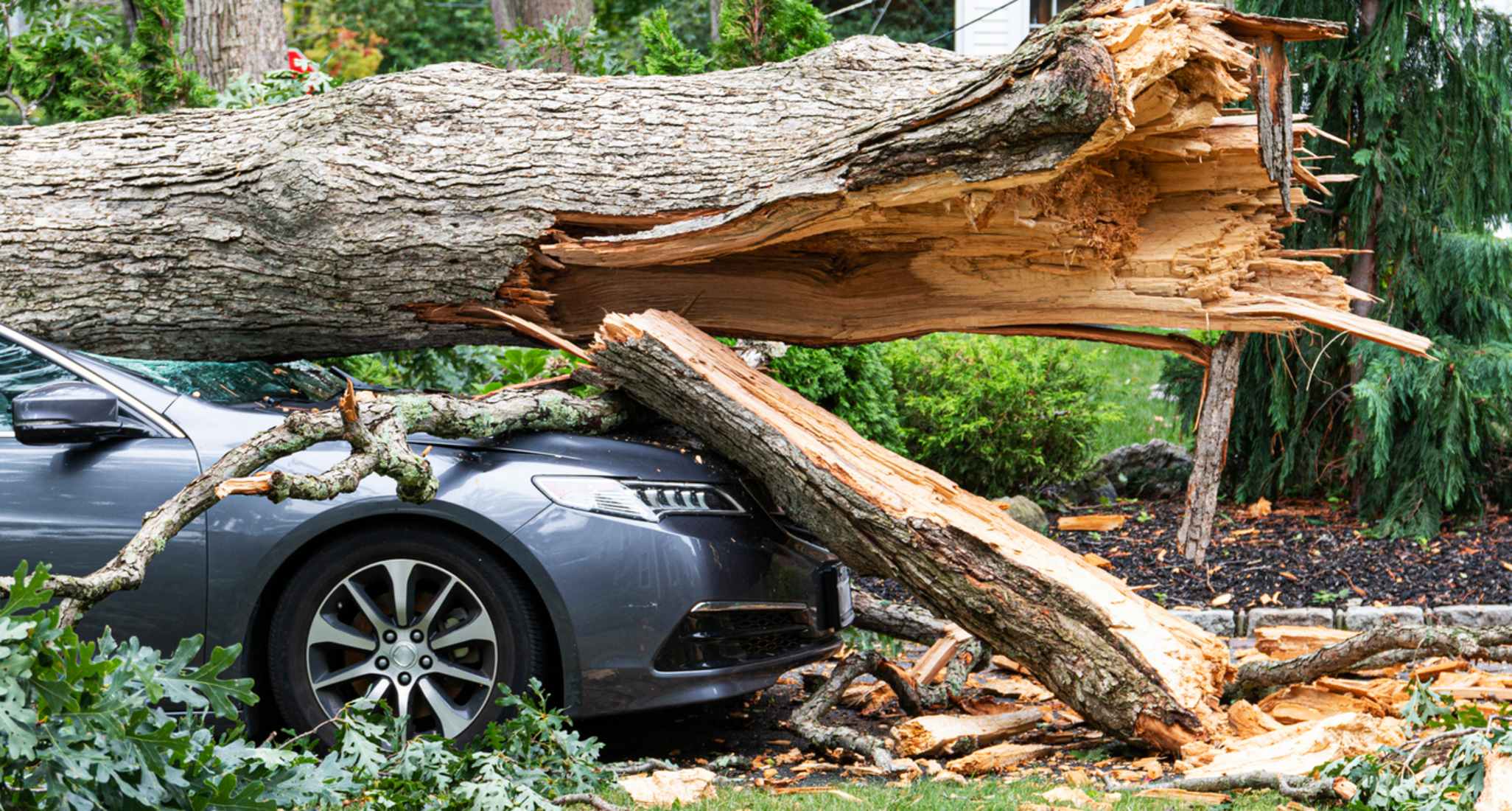Car insurance
Which insurance covers natural hazard damage to your car?
Natural events such as storms, hail or floods can cause damage to your vehicle. We will explain which insurance covers this damage.

03.06.2025

iStockphoto / WoodysPhotos
1. What is classed as natural hazard damage to a car?
Natural hazard damage is caused by the forces of nature. A distinction is made between the following natural hazards:
Storms
If a storm with a wind speed in excess of 75 km/h rages and causes damage, this is referred to as natural hazard damage. During a storm, flying debris can damage your vehicle, for example.
Hail
Hailstones can leave unsightly marks on cars. Read more about hail damage to cars here.
Flooding
After heavy rain, a river may break its banks. The water can cause catastrophic damage, and may also affect your car.
Avalanche
An avalanche can damage your car with masses of snow. In the worst-case scenario, the chassis can be bent.
Landslides and rockfall
Sliding earth and falling rocks can damage your vehicle. As a result, you may need to get the bodywork and windows repaired.
Load from heavy snowfall
Snow is also something that can damage your vehicle. Large volumes of snow on the roof can deform the bodywork or even bend the chassis.
Lightning
If lightning strikes your car during a storm, the car can suffer damage to the paintwork, tyres or vehicle electronics.
2. How do I insure my car against natural hazards?
Separate natural hazard insurance for cars is not available, but natural hazard damage is covered by casco insurance. This means that if you have partial casco or full casco insurance, the insurance will cover the costs of the damage. If you only have liability insurance for your car, you will have to pay for the damage yourself.
| Type of car insurance | Cover for natural hazard damage |
|---|---|
| Liability | No |
| Partial casco | Yes |
| Full casco | Yes |
Tip: It's worth checking the general insurance conditions to find out what natural hazard damage your insurance covers. Will partial casco insurance also pay for natural hazard damage caused by heavy rain or backwater during flooding? If in doubt, contact your insurance company directly.
3. What should I do in the event of damage?
Has your vehicle been damaged by a natural event? If so, you should report the damage to your insurance company as soon as possible. This is usually quite easy to do by phone or email.
Before reporting the damage to your insurance company, however, you should work through the following points:
Write down everything you can about the damage: when and where was your car damaged? What damage was caused?
Take photos of the damage.
Once you have reported the damage, your insurance company will check the damage and inform you whether you should take your car directly to the garage or have an appraisal carried out.
Switching insurer after a natural hazard claim
Are you not satisfied with how your insurance company handled your claim? After you have made a claim, you have the extraordinary right to cancel your insurance. Take advantage of this opportunity and compare the premiums and benefits offered by different providers.
4. How to reduce the risk of natural hazard damage to your car
Natural hazard damage to your car cannot be prevented, but you can significantly reduce the risk. Here are some tips to prevent damage:
Pay attention to weather warnings – is a thunderstorm or gale-force winds forecast? Park your car in a safe place, such as in the garage or under a carport.
Avoid exposed parking spaces If a thunderstorm is approaching, you should ideally not park your vehicle under trees or near scaffolding or construction cranes. Find a parking space a good distance away from objects that could fall over or fall down.
Avoid driving when there are official severe weather warnings and stay at home if possible. If you are already on the road when a storm approaches, you should reduce your speed and, if possible, avoid forest areas and alleys. Also, watch out for flying objects.
These preventive measures can significantly reduce the risk of damage. Nevertheless, there is no such thing as 100% protection. If in doubt, however, casco insurance will ensure that you are financially protected in the event of natural hazard damage to your car.
This article was first published on 11.07.2017




